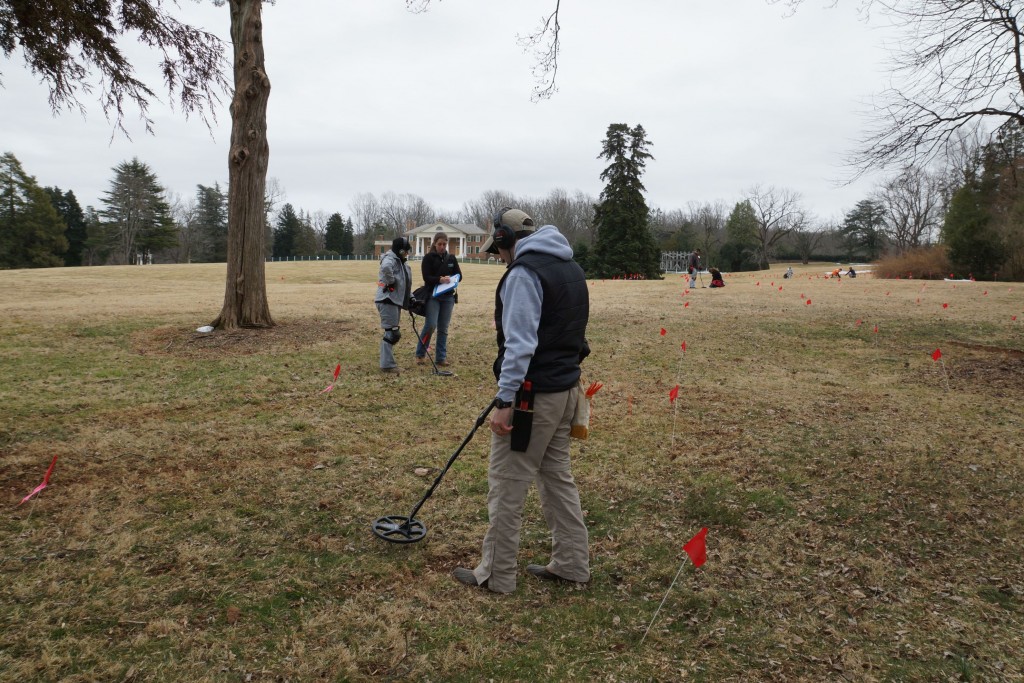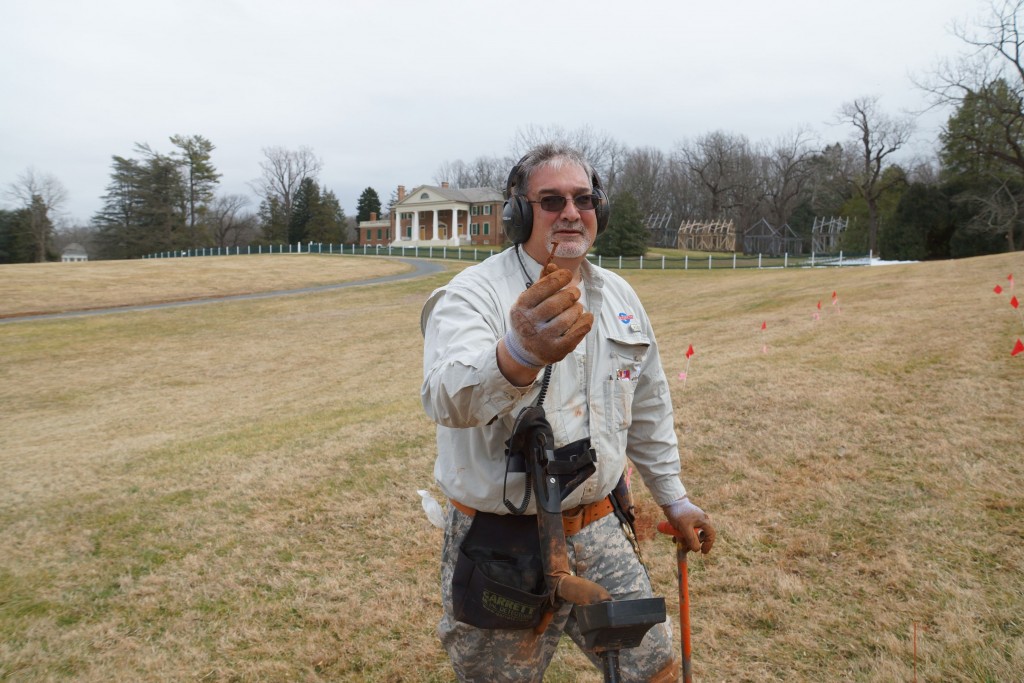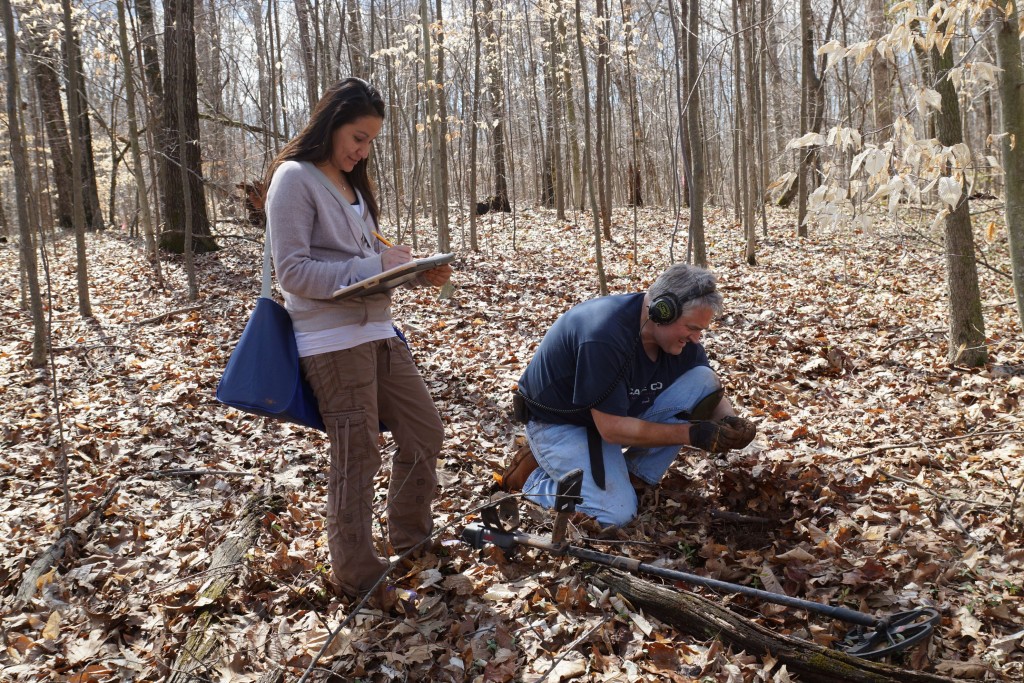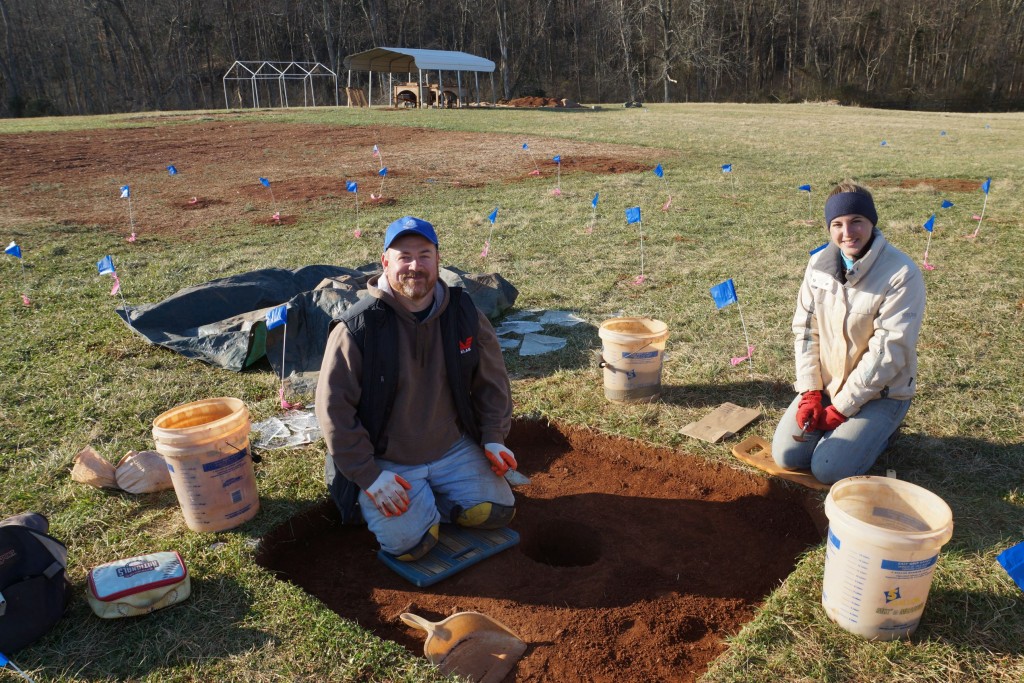Diggers Done Right
They’re back! Yes, the King and Ringy, that duo you love to hate will be…
 The following post discusses the first metal detecting workshop open to the general public, directed by the Montpelier Archaeology Department this Spring. The post was co-authored by Dr. Matthew Reeves, Director of Archaeology and Landscape Restoration at the Montpelier Foundation, and Scott Clark, a member of the metal detecting community and participant in the 2013 workshop. Mr. Clark lives in Kentucky and holds a BS in Computer Science from Southern Illinois University, and blogs about metal detecting at http://detecting.us, where you can read about his experience at the workshop. You can read about Dr. Reeves’ previous metal detecting workshop with metal detector dealers from Minelab here.
The following post discusses the first metal detecting workshop open to the general public, directed by the Montpelier Archaeology Department this Spring. The post was co-authored by Dr. Matthew Reeves, Director of Archaeology and Landscape Restoration at the Montpelier Foundation, and Scott Clark, a member of the metal detecting community and participant in the 2013 workshop. Mr. Clark lives in Kentucky and holds a BS in Computer Science from Southern Illinois University, and blogs about metal detecting at http://detecting.us, where you can read about his experience at the workshop. You can read about Dr. Reeves’ previous metal detecting workshop with metal detector dealers from Minelab here.

Participants Peter Roder and Krisztina Roder surveying the front lawn of Montpelier with archaeologist Samantha Henderson. This survey is intended to locate the early 19th century carriage road as well as other sites located on the front lawn for future preservation and study.
In mid March, the Montpelier Archaeology Department completed the first public archaeology program at Montpelier that was open to the general metal detecting public. This program pairs metal detectorists with trained Montpelier archaeology staff to conduct gridded metal detector surveys across a section of the 2700-acre property to locate and identify archaeological sites. This survey work is combined with lectures regarding what archaeology can reveal of sites, human activity, and how it meets the goals of a historic site such as Montpelier. On one level, the purpose of this program is to locate historic sites so they can be preserved. It just so happens that controlled and gridded metal detector surveys are one of the most efficient means of finding a range of sites from ephemeral slave quarters, to barns, and sites characteristically missed by standard shovel test pit surveys.
While these outcomes are realized and form the backbone of the week’s activities, this is not all that we are after with these programs. One of the most important and inspirational outcomes is the dialogue from two different groups teaming up together to engage in scientific research. One of the most important part of the week’s events was getting across not just the “how” of archaeological survey, but the “why”…and it is the why that some of the most challenging and inspiring conversations developed.
As the week progressed, provenance and context began to frame conversations which had previously been artifact-centric. It became clearer that once detectorists have insight into the broader hypothesis of a project, the sooner they became immensely productive allies in achieving its goals. They expressed the importance of feeling the years they’ve spent mastering their hobby was being respected by the professionals beyond only a field technician’s role.

Participant Fred Delise showing off nail he recovered from an 18th century activity area. Participants learn how to identify nails and their significance for dating and interpreting archaeological sites.
The knowledge flowed many directions. The detectorists’ expressions when presented the full richness of nail dating techniques was equaled only by those of the archaeologists as they learned how dating shotgun shells could tell you when a wooded area was likely open fields! When the excitement of archaeology is transferred to a group labeled as pot hunters and looters, the fallacy of a one-size fits all for metal-detectorist community is revealed.

Participant Jim Wirth excavating a metal detector hit accompanied by archaeologist Jimena Resendiz during survey of a wooded portion of the Montpelier property. While this particular woodlot was originally intended for a selective forestry cut, the number of archaeological sites we have located through metal detector survey has marked it for preservation.
The detectorists had come to Montpelier to better understand the methodology and language of archaeology and, in many cases to improve dialogue with professionals at home. The most common question asked was how they could get local archaeologists to consider employing metal detecting at their site. This was not so that the detectorists could extract artifacts, but so that they could meaningfully contribute in site discovery, survey and other systematic examinations of sites. In essence, these folks want to become engaged with the archaeology groups, they just don’t know how.
What the Montpelier team hopes to achieve through its programs is to show how metal detectorists and archaeologists can begin to work together in a meaningful manner and through a range of scientific endevours. Metal detector technology combined with an intimate knowledge of the machine from decades of use is a very powerful tool that can be harnessed as a reliable remote sensing technique. When engaged as a member of a research team, metal detectorists learn what makes archaeologist so passionate about recovering artifacts in their proper context—and studying the wider range of material culture from nails to bricks.
By bringing more metal detectorists into the archaeology fold, the profession can begin to take advantage of the millions of detectorists who spend weekends and holidays researching history, locating sites and scanning the ground with a metal detector.
While archaeologists will likely not be able to engage the detectorists who see metal detecting as a way to locate and sell artifacts (with these folks being in the minority of the detecting community), engagement with the others, while preserving research schemes, could bring important benefits. For example, a new generation of detectorists may be ready to go “digital” while participating on archaeological sites as we saw with the group at Montpelier. These detectorists were happy to do “virtual artifact collecting” via their digital camera to be later shared with friends online rather than take the objects home. Some took photos in-situ, others while holding them, and some during preservation in the lab. Excitement grew while context was preserved, and the story (of the find, as well as the archaeological effort) was spread to their network of friends.

During the program, participants spend a day at the archaeology site to learn how we recover artifacts. In this shot, archaeologist Jeanne Higbee trains Tom Ratel in the art of unit excavation. This particular site is a quarter for field slaves that we are excavating as part of a four-year NEH study of the enslaved community at Montpelier. This site was defined by metal detector surveys conducted during a similar program held in 2012.
This line of interaction goes much further than moralizing to metal detectorists regarding the evils of using a shovel to dig artifacts from a site with no regard for provenience. Archaeologists need to communicate to metal detectorists the value of their work and how it can be used to expand understanding of the past in a relevant and meaningful manner. This means stepping outside of peer-based discussions and engaging with the public. This is especially relevant for historical archaeologists as our sites often have no visible set of cultural resources that that the public will witness as being disturbed by sticking a shovel into the ground, and even if they saw the artifacts, the items recovered would not present a convincing case for preservation for the untrained eye. Archaeologists have the obligation to show the relevance of the discipline in our understanding the larger narrative of history.
With metal detectorists, archaeologists have a potential set of allies (and even advocates) who are already share a passion for searching for ephemeral sites and using the finds to connect with the past. When presented with the range of information via a systematic study of a site, rather than being unimpressed, metal detectorists are brimming with questions and interest, uncovering adjacent possibilities that can lead to innovations we may not have yet imagined.
Finding common ground between detectorists and archaeologists also has the potential side effect of archaeology gaining more resonance with the general public. Detectorists come from all walks of life and all ages and are present in just about every community. The public (including lawmakers and, often, reporters) are often captivated by the individual artifacts we (both archaeologists and metal detectorists) uncover – and perceive it as saving history. Associations and understanding between our groups could spread the “how” and “why” of what we do even further, clarifying how there’s more to save than just artifacts, but the sites from which they came. When we can do this effectively, our discipline and quest for preservation of sites will begin to be taken more seriously by legislators and the general public.
Interested in doing your own workshop at your institution? Dr. Reeves has made his workshop manual available for download here.
This project was held in conjunction with the National Trust for Historic Preservation (see their blog on this program) and Minelab Americas.
Pingback: Metal Detecting Rallies and Artifact Provenance
Usually I don’t comment on blogs but your post is so convincing that I never stop myself to
say something about it. You’re doing a excellent job Man,Keep up it.
i thought that normal metal detectors used in archaeolgy perposes, thanks for the great info